(Featured image: grey wolf walking, credit Kim Bartlett – Animal People, Inc.)
For over three weeks now, officials in Washington state have been systematically killing off the Profanity Peak grey wolf pack. Numbering 11 individuals, Profanity Peak is one of 19 known packs in the state, together comprising just 90 known wild wolves in all of Washington. Their alleged crime? Preying on cattle grazing on public land.
Belonging to rancher Len McIrvin, the cows attacked were allegedly turned out to graze “right on top” of the pack’s den in the Colville National Forest. Their presence drove away native deer and left the wolves with few alternative prey animals. As a result, six cows have been killed in the past year.
Despite the clear role of human error – or deliberate provocation – in causing the conflict, the government sided with McIrvin and set its sights on the Profanity Peak pack. On August 5th, 2016, they shot dead two female wolves from a helicopter. One of them afterward turned out to be the breeding female, mother of all pups born to the pack this year. On August 21st, they killed one adult male, and on August 22nd, another male, a female pup, and an adult wolf of unknown sex.
As of August 25th, five known pack members remain alive, though the state Department of Fish and Wildlife is still hunting, and plans to exterminate the entire Profanity Peak pack.
Sign the petition telling Governor Jay Inslee to halt the slaughter of the Profanity Peak wolves!

Grey wolf photographed in Washington state (photo credit: U.S. Fish and Wildlife Service, used under CC BY 2.0)
While horrible to say the least, it should come as no surprise that the government would take action to protect cattle by killing wolves. Or, more precisely, to protect ranchers’ economic interests, the cows themselves destined inevitably to be slaughtered whether by wolves or humans. What is shocking is that the Profanity Peak massacre was approved by some conservation groups… including Defenders of Wildlife and Conservation Northwest, members of the state Wolf Advisory Group and co-authors of the protocol to lethally remove wolves.
“It’s a disappointing day when the state has to move forward with the last resort of lethal control,” said Defenders of Wildlife in a public statement, “but we have come to that day.” In their own statement, Conservation Northwest assented to the killing “as a necessary component of coexistence where people, wolves and livestock share territory.”
How can we make sense of these organizations, tasked (in the public eye at least) with protecting the interests of wildlife, instead condoning and enabling the Profanity Peak massacre? The key lies in understanding the common ideology shared by all parties involved, who – as different as their motives and aims may appear – share a worldview which places humans apart from nature and above all other forms of life.
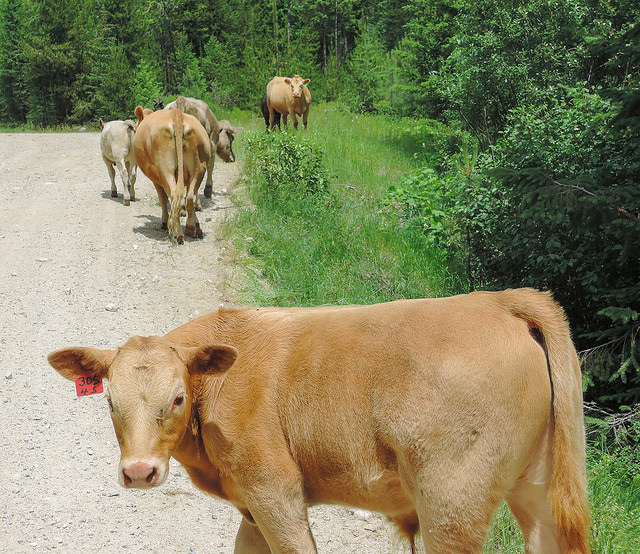
Cattle roaming in the Colville National Forest, home of the Profanity Peak pack (photo credit: Ed Suominen, used under CC BY-NC 2.0)
While most obvious on the part of ranchers and their political allies, who raze wilderness to farm domesticated animals for human consumption, this ideology is implicit in the work of Defenders of Wildlife and Conservation Northwest as well. While they may seek to “protect” and “preserve” the natural world from human destruction, their motives similarly privilege human interests above those of other beings, and they too ultimately fail to recognize humans’ true status, not apart from, but as an inextricable part of nature.
“Washington’s wildlife belongs to all the people of the state regardless of where they roam, or where the people live,” states Conservation Northwest in their endorsement of the Profanity Peak wolf massacre. If animals belong to people, they cannot possess rights of their own, nor do they belong to the natural world; they are valuable merely as possessions of Washington state’s human residents.
This anthropocentric attitude toward wild animals is evident in the programs and strategies of many conservation groups. For example, endeavors to protect “native” species by killing off “invasive” ones – defined by Defenders of Wildlife as “organisms that are introduced to a given area outside their original range and cause harm in their new home” – generally do not benefit “nature” so much as they do human sentiment. Nature thrives on change, ecosystems constantly shifting as organisms spread, compete, evolve, and die off. It is humans who demand the natural order remain in the same static balance as it was at some arbitrary moment in history – often when our species, or members of a particular culture or race, first arrived on the scene.
When these same conservationists defend the killing of wolves, an endangered native species, in order to protect non-native cattle introduced by humans, the most harmful invasive species of all, they expose all pretense of protecting nature for its own sake. An even more anthropocentric agenda is revealed: not to preserve ecosystems as they have ever existed in the past, but to establish a new natural order of maximum benefit to human interests.
The ideological roots of the Profanity Peak massacre trace back thousands of years. Aristotle (384-322 BCE), the “father of Western philosophy,” taught that of all living creatures, humans alone possess a “rational soul” granting us free will and the ability to think. Due to these unique faculties, Aristotle regarded human beings as the natural, preordained masters of the natural world:
“Now if nature makes nothing incomplete and nothing in vain, the inference must be that she has made all animals for the sake of man. And so, in one point of view, the art of war is a natural art of acquisition, for the art of acquisition includes hunting, an art which we ought to practice against wild beasts, and against men who, though intended by nature to be governed, will not submit; for war of such a kind is naturally just.” (Aristotle, “Politics,” Book I, Chapter 5) [1]
Though undoubtedly not the first or only ancient thinker to champion human tyranny, Aristotle would prove the most influential to Western culture. More than a thousand years later, his philosophy was embraced by medieval Christian theologians, and his views on human-animal relations yoked to a self-serving interpretation of the Biblical concept of “dominion:”
“So God created man in His own image, in the image of God He created them; male and female he created them. And God blessed them, and God said to them, ‘Be fruitful and multiply, and fill the earth and subdue it; and have dominion over the fish of the sea and over the birds of the air and over every living thing that moves upon the earth.'” (Genesis 1:27-28)
Through the union of Aristotelian philosophy and Christian doctrine, a cosmology called the “Great Chain of Being” was conceived. The Great Chain of Being portrays a rigid hierarchy in which humans stand beneath God and the angels, but above all other living organisms and natural elements, over whom human beings hold absolute power and the right to exploit without qualms or restrictions.[2] This worldview proved influential to early modern scientists like René Descartes (1596-1650), who argued that humans are the sole rational species and all other creatures are mere “automata mechanica” animated by purely mechanical processes.[3] Thus did the Great Chain maintain its grip over all areas of Western culture into the modern age, even in scientific disciplines otherwise wholly divorced from religious thought.
As we have seen, conservation groups entrusted with protecting the natural world remain deeply influenced by this ancient ideology of human superiority. Animal rights activists are not unswayed by it either. Whenever we ground our concern for animals in some supposedly “unique” human faculty such as reason or empathy, we reaffirm the notion of Homo sapiens as the highest form of life and so unwittingly reinforce the Great Chain’s hold. More dangerously, there are those in the animal rights community who view themselves as nature’s police and advocate forcibly imposing human values (such as veganism or non-violence) on other species, for instance by eradicating animals that naturally kill others for food, or whose reproductive processes involve over-breeding of individuals of whom most will perish before reaching maturity.
As deeply entrenched as it is in our culture, the notion of humans as rightful tyrants over nature has long been exposed as false. A conceptual paradigm shift began with the work of Charles Darwin (1809-1882), whose theory of evolution via natural selection – subsequently confirmed beyond a shadow of a doubt by empirical evidence – established that humans share a common ancestry and many biological traits with other living creatures. Disproven was any notion of absolute difference between our species and the rest. Nonetheless, the evolutionary “tree of life” continued to be depicted as a rigid hierarchy, with humans seated atop the highest branch.
In 1960, primatologist Jane Goodall sparked another conceptual revolution, by proving that wild chimpanzees can make and use tools. Goodall’s supervisor at the time, anthropologist Louis Leakey, famously remarked “Now we must redefine ‘tool,’ redefine ‘man’ or accept chimpanzees as human.” Thanks to the vast body of animal intelligence research Goodall set into motion, we now know that virtually every mental faculty once considered unique to humans exists in other species as well: inferential reasoning in dogs,[4] cooperative hunting in fish,[5] altruism in vampire bats,[6] self-awareness in manta rays,[7] and cultural traditions in bowerbirds,[8] to name just a few examples.
New research continues to disabuse humans of our delusions of grandeur in the natural scheme. A recent study comparing 474 mammalian species found that larger brains, rather than conferring the clear survival advantage we might egotistically assume, actually increase animals’ likelihood of extinction due to factors like decreased offspring and higher energy needs. Rather than uphold Homo sapiens as a fortunate exception to the rule, co-author Manuela González-Suárez notes our unsustainable population growth and responsibility for global climate change, opining that “We might be too clever for our own good, [and yet]we’re not clever enough to realise when we are destroying our planet.”
Indeed, as clearly atrocious as humans’ cruelty and disregard toward other animals is – and always has been, to those who heeded compassion above self-serving doctrines – the tragedy of Great Chain ideology can only be fully appreciated in the context of global climate change. Driven as it is chiefly by the exploitation of animals for food, climate change represents the devastating final consequence of humankind’s tyranny over the natural world.
In order to produce meat, dairy, and eggs for mass consumption by a human population many times larger than at any time before the 20th century, modern farming methods maximize economic efficiency at the expense of animal welfare. Animals in factory farms are raised in tiny, overcrowded spaces with little if any access to sunlight, fresh air, or even room to turn. They, along with most of their “humanely” raised brethren – a tiny fraction of farm animals still subjected to branding, castration without anesthesia, unnatural crowding, and limited outdoor access – are killed in industrialized slaughterhouses, whose rapid pace and imprecise methods leave many individuals still conscious as they are defurred or defeathered, skinned, and dismembered.
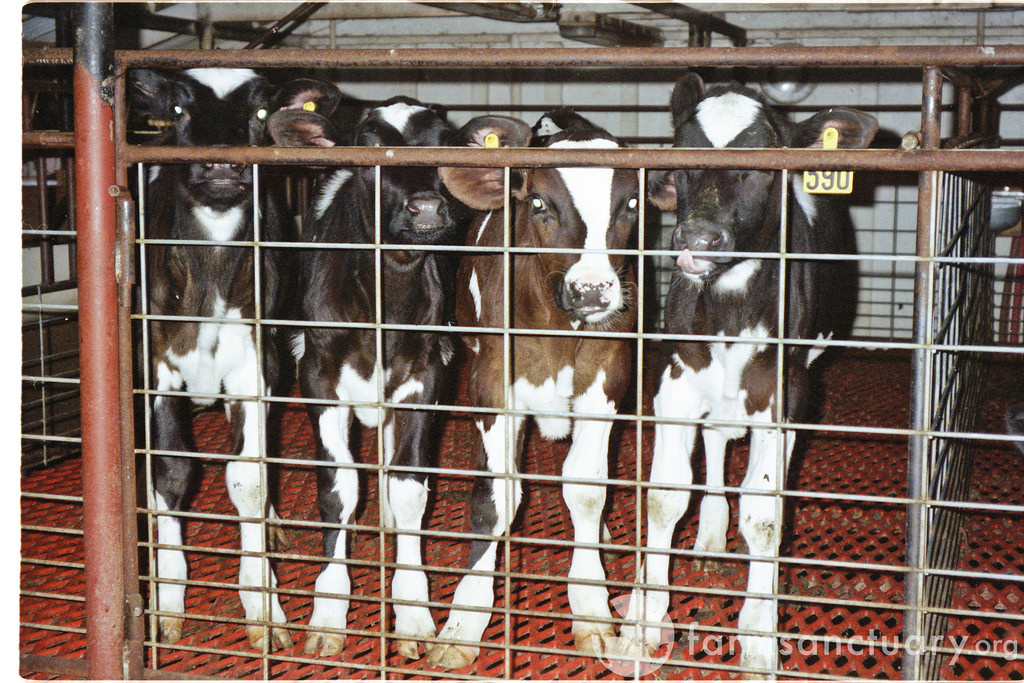
Male calves, by-products of the dairy industry, intensively raised and slaughtered young for cheap beef (photo credit: Farm Sanctuary, used under CC BY-NC-ND 2.0)
Because every pound of meat requires 4.5 to 20 times its own weight in plant matter to produce, and around 100 times more water than the same amount of vegetable protein (varying by animal species), the massive scale of animal food production places a vastly unsustainable burden upon the environment. Its role in causing climate change is often ignored by mainstream environmental organizations which focus instead on the transportation industry. Yet animal agriculture rivals and may well exceed transportation as the leading driver of global warming. The United Nations’ Food and Agriculture Organization attributes 14.5% of all greenhouse gas production to animal agriculture. Using different methodologies, some studies place the total much higher, up to 51% of all greenhouse gas emissions.
The consequences for the planet’s ecosystems, and human civilization, are terrifying. According to a recently leaked report commissioned by Nestlé, if meat production continues at current rates, a third of the human population will face water shortages by 2025, with “catastrophic” global consequences by 2050. A recent study led by former NASA climatologist James Hansen projects sea level rises of up to 10 feet by the year 2065, and warns of the devastating effects for humanity:
“Social disruption and economic consequences of such large sea level rise, and the attendant increases in storms and climate extremes, could be devastating. It is not difficult to imagine that conflicts arising from forced migrations and economic collapse might make the planet ungovernable, threatening the fabric of civilization.” (James Hensen, “Ice Melt, Sea Level Rise and Superstorms,” Atmospheric Chemistry and Physics 16 (2016), p. 3799)
Finally, astrobiological studies of the Earth’s atmosphere, in relation to our distance from the Sun, indicate that continued rates of greenhouse gas production could send the Earth into a “moist greenhouse phase” by the year 2300. [9] [10] Similar to the process that turned the planet Venus, once moist and temperate, into a lifeless hellscape bathed in acidic rain, such an event would boil the Earth’s oceans and eventually render our world completely uninhabitable. As terrifying as the prospect of societal collapse may seem, the spectre of a moist greenhouse is even more frightening… not least because, if the studies are correct, the end of industrial civilization may be our only hope for life itself to survive.
The ideology of human tyranny traces back to mythic accounts of our species’ past, as a heroic creature divinely appointed to rule over the lesser beings created on its behalf. If there is to be any hope of throwing off this Great Chain – of averting catastrophe before we drag the whole natural order into chaos with our own self-destruction – we must manage to reconnect with nature and find our place within it. To save the future, we must critically reconsider our own past.
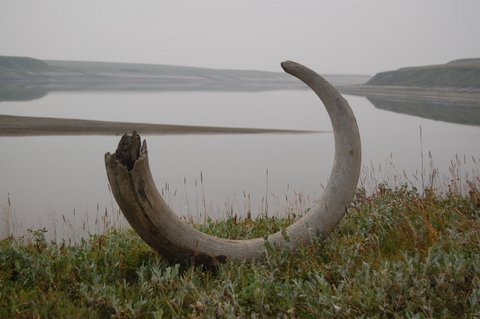
Mammoth tusk uncovered in Taymyr, Siberia (photo credit: Johanna Anjar, www.anjar.nu)
In stark contrast to our self-serving mythologies, Russian environmental scientist Sergei Zimov has penned a provocative alternative history of the human species in his “Wild Field Manifesto.” Unsurprisingly, Zimov is a controversial figure; his research centers on “Pleistocene Park,” an experimental nature reserve in northern Siberia where he is attempting to recreate an Ice Age pasture ecosystem. The project entails repopulating the reserve with species which once dwelt in the region, as well as introducing new ones similar to those which have since become extinct. Eventually, Zimov’s team hopes to use genetic engineering to bring back even long-dead species like woolly mammoths.
It may be tempting to dismiss Pleistocene Park as science fiction for its lofty aspirations, or for deliberately introducing non-native species rather than eradicating them as mainstream conservationists do. However, it deserves serious consideration as a uniquely non-anthropocentric approach to wildlife protection. Pleistocene Park takes a much broader view of ecosystems than do most conservation groups; it prioritizes filling niches over merely preserving a specific roster of species, and long-term ecological stability over familiarity or convenience to humans.
Perhaps most importantly, Zimov seeks more than just to preserve wilderness for human use; in the “Wild Field Manifesto,” he reexamines human history and challenges the notion that nature is ours to manipulate in the first place:
“Several million years ago, our ancestors climbed down from trees and moved into the pasture ecosystems. It is in these ecosystems Homo sapiens appeared and spread. Pasture ecosystems were the most food-rich ecosystems, but at the same time they were the most dangerous. In the open landscape with low-growing vegetation, it was hard to find shelter. Wherever you were, hundreds of pairs of eyes saw you. … How did humans and their kids survive surrounded by thousands of dangerous animals? … What did the first, not very skilled and armed, people eat? What was the human ecological ‘profession?’ What profit did he give to the ecosystem?”
While traditional portrayals of human history celebrate our ancestors’ bravery and ingenuity, harnessing the elements and conquering our natural enemies, hunting large prey and growing stronger and smarter off their flesh, Zimov’s early humans subsist by far more humble means. He dismisses the notion of our primitive ancestors as fearsome hunters, highlighting their enormous biological disadvantages compared to natural carnivores like wolves:
“All the big herbivores had ways to both protect themselves and attack, and all of them were 2-3 times faster than humans. Every year wolf families birth 6-10 puppies who became hunters and parents themselves within a year. The loss of several wolf brethren during a hunt was not vital for the community; they could afford to take the risk. Humans, in contrast, have only one baby a year which can’t walk for a long period of time and has to manage to live for at least 15 years to become a getter. The price of risk between wolves and man differed by a hundred times. Therefore for a human family’s survival, even a small risk of the breadwinner’s death is unacceptable.”
According to Zimov, the secret to early humans’ survival was their ability to subsist on a handful of resources other species couldn’t utilize. Humans could digest weeds such as onions, garlic, horseradish, black radish, and sorrel, which are poisonous to many other animals. Humans could also crack open large bones to reach fatty marrow unavailable to most predators. Accordingly, our ancestors were able to eke out a meager existence as “cleaners and last order scavengers.”
“They gave profit to the ecosystem, so other animals could stand humans. However, it is unlikely that humans were a respected creature. Smelling of smoke, onion, and garlic and dressed in rags taken from dead animals, humans weren’t the most desired prey. Humans may have been the wisest species in this ecosystem, but they were on the bottom of the social pyramid, lower than goats and hyenas. Even the dumbest animals could butt or kick them. Under this social status humans could not be zealous masters; they rarely ate enough and their strategy for survival was simple – the more you can manage to procure the better.”
Over time, humans did find ways to increase their standing in the ecological hierarchy. They learned to use weapons, and to actively hunt other animals for food, eventually managing to take down even large herbivores like mammoths. But this did not make Homo sapiens “‘king of the animals’ and zealous master.” It was not until the end of the Ice Age that new circumstances afforded humankind an opportunity to usurp the role of dominant predator, and begin to subjugate the natural world for its own ends.
“Fourteen and a half thousand years ago, sharp climate warming took place. The Ice Age was over. Human chances for survival, especially for kids, substantially increased in the middle and high latitudes. People populated north of Eurasia and then penetrated into America. Experienced and well-armed hunters met herds of untamed animals. The further humans moved from their historical motherland, the more they engaged in their ‘bloodthirsty pursuit.’ In northern Asia, 8 megafauna species went extinct upon human arrival, in North America, 33, and in South America almost all – 50 species in total.”
Even many thousands of years ago, long before industrial civilization, humans’ attempts to conquer nature proved self-destructive. Once our ancestors had killed off most of the large herbivore species, there were no longer enough animals to maintain pastures, and the grassland ecosystems that had produced our staple plant foods – root vegetables toxic to other species – were overrun by trees and shrubs. (While counterintuitive, it is a documented fact that many forests did not exist prior to human arrival; the Amazon, for example, was mostly savanna rather than jungle until after the first civilizations arose in the region.) Agriculture was invented, not as a triumphant advancement over hunting and gathering, but a desperate necessity after wiping out our original food supply:
“The human hunter had caused his own food source to vanish. Animal density sharply decreased and, for survival, humans had to learn how to become zealous masters. People domesticated many animals and learned how to pasture and protect their herds. Species which had masters before [in the form of natural predators]were easy to re-domesticate.”
Wolves, the creatures we now persecute for preying on cattle, played an essential role in enabling humans to develop agriculture. Without them, Homo sapiens could never have become the “zealous master” it is today:
“People have coexisted with dogs (wolves) for a long time. Good shepherd dogs don’t need to be taught how to pasture and protect animals – they have it in their genes. Dogs’ ancestors could do that, but people had to learn how to do it, so it is a question who was teaching whom how to pasture animals?”
This is Sergei Zimov’s story of humanity. Not the triumphant story of a proud conqueror endowed with unique faculties of mind and appointed, by God or evolution, to rule over the lesser creatures of the Earth; but the tragic story of a lowly scavenger, bitter and envious over his place in the ecosystem, whose efforts to usurp control over nature repeatedly lead to disaster for all.
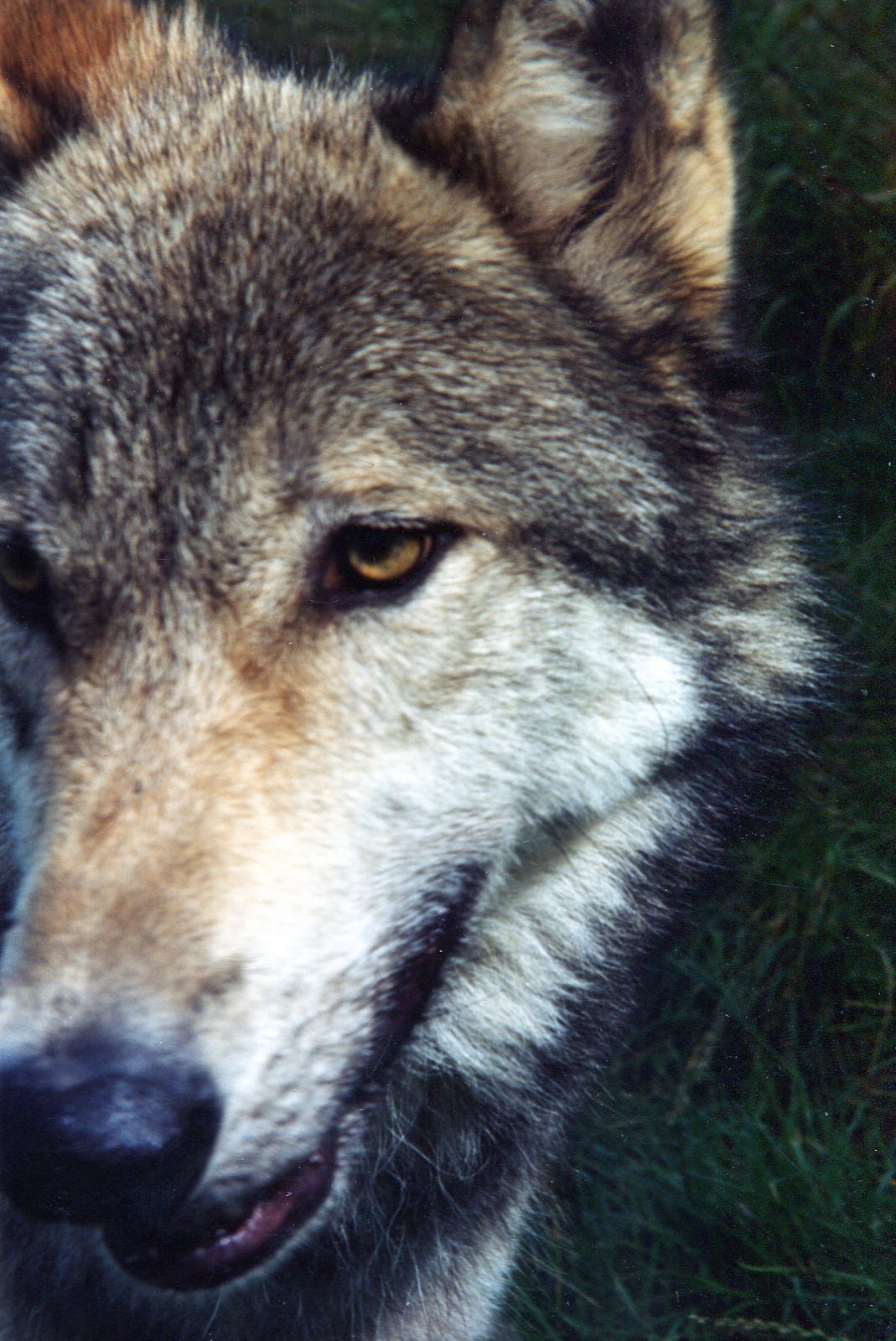
Photo credit: Kim Bartlett – Animal People, Inc.
Zimov’s story may not be accurate in all its historical details. It certainly isn’t pleasing to reflect on our ancestry in such unflattering terms, to think of the advancement of civilization as merely a scavenger’s self-destructive ambition. But while our preferred story, that of a sanctioned human tyranny, may appeal to our egos and self-interest, it has not served the world well. As the Profanity Peak massacre goes on, we should reflect that as we kill wolves for preying on livestock whose existence degrades the earth, we may be sentencing ourselves to the same fate.
To avoid such an ending, we must learn to live a different story: one that dispels our pride, and unseats us from the throne we claim over nature, instead teaching us to live humbly as one species among many in the vast community of life.
Dedicated to the eleven members of the Profanity Peak wolf pack. May your lives, and the memory of your deaths, not be in vain.
__
Citations:
[1] Aristotle. “Animals and Slavery.” Animal Rights and Human Obligations. Ed. Tom Regan and Peter Singer. Englewood Cliffs, NJ: Prentice-Hall, Inc., 1976. 4-5.
[2] Armstrong, Susan J. and Richard G. Botzler. “Animal Ethics: A Sketch of How it Developed and Where it is Now.” The Animal Ethics Reader, Second Edition. Ed. Susan J. Armstrong and Richard G. Botzler. London, UK: Routledge, 2008. 1-14.
[3] Descartes, René. “Animals are Machines.” Animal Rights and Human Obligations. Ed. Tom Regan and Peter Singer. Englewood Cliffs, NJ: Prentice-Hall, Inc., 1976. 60-66.
[4] Aust, Ulrike; Friederike Range; and Michael Steurer. “Inferential Reasoning By Exclusion in Pigeons, Dogs, and Humans.” Animal Cognition 11, no. 4 (October 2008), 587-597.
[5] Main, Douglas. “Fish Use ‘Sign Language’ to Help Hunting Buddies.” Discovery News. April 29th, 2013. http://news.discovery.com/animals/fish-use-sign-language-130429.htm
[6] Wilkinson, Gerald S. “Reciprocal Food Sharing in the Vampire Bat.” Nature 308 (March 1984), 181-184.
[7] Blaszczak-Boxe, Agata. “Manta Rays Are First Fish to Recognise Themselves in a Mirror.” New Scientist. March 21, 2016. https://www.newscientist.com/article/2081640-manta-rays-are-first-fish-to-recognise-themselves-in-a-mirror/?utm_source=NSNS&utm_medium=ILC&utm_campaign=webpush&cmpid=ILC|NSNS|2016-GLOBAL-webpush-MANTARAYS
[8] Diamond, Jared. “Animal Art: Variation in Bower Decorating Style Among Male Bowerbirds Amblyornis inornatus.” Proceedings of the National Academy of Sciences of the United States of America 83 (May 1986), 3042-3046.
[9] Kopparapu, R.K.; R. Ramirez; J.F. Kasting; V. Eymet; T.D. Robinson; S. Mahadevan; R.C. Terrien; S. Domagal-Goldman; V. Meadows; and R. Deshpande. “Habitable Zones Around Main-Sequence Stars: New Estimates.” Astrophysical Journal 765 (2013), 131.
[10] Frank, Alan and Woodruff Sullivan. “Sustainability and the Astrobiology Perspective: Framing Human Futures in a Planetary Context.” Anthropocene 49 (2014), http://dx.doi.org/10.1016/j.ancene.2014.08.002

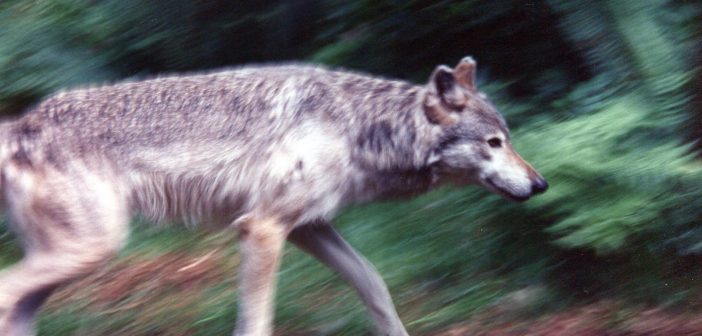
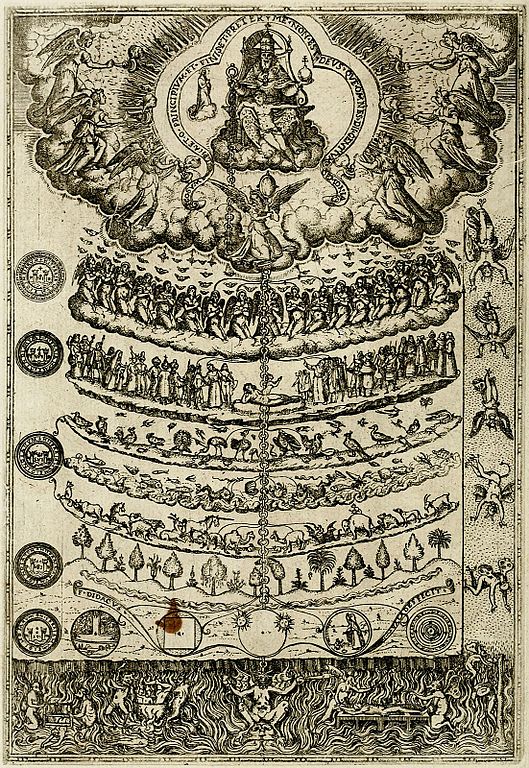




1 Comment
human will keep killing animals and destroy their houses and the nature
and then we said oh sorry it just happen